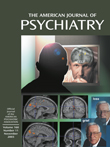Approximately 60%–70% of patients with schizophrenia experience auditory hallucinations of spoken speech. These experiences respond poorly to pharmacotherapy in perhaps 25% of cases and produce high rates of distress and disruptions of behavior and judgment. This book turns this conventional view on its head by challenging the wisdom of viewing hearing voices as an indication of illness rooted in the biology of the brain. The book, which is written by a cultural historian with a long-standing interest in the delineation of subjective states, begins by noting the difficulties in objectively attempting to define characteristic features of auditory hallucinations that reliably identify the experience as pathological. These difficulties arise because auditory hallucinations can also arise from drugs, alcohol, and transitional states between sleep and waking. Moreover, some people who do not have an obvious mental illness still “hear voices” with an entirely clear sensorium. States of religious or creative inspiration seem to induce these experiences, for instance. Joan of Arc described hearing voices of saints telling her to free her country from the English. The German poet Rainer Rilke heard the voice of a “terrible angel” amid the sound of a crashing sea after living alone in a castle for 2 months. This experience prompted his writing the famous Duino Elegies. Where and how should the clinician draw the line between these experiences and the voices of schizophrenia?
The author notes that sensory qualities of the experience—loudness, vividness, whether voices are external or internal, degree of self-control—do not always provide good indicators. Instead, psychiatrists tend to rely on the disruptive effect of these experiences on the individual’s functioning in the world when ascribing pathology. The author takes great offense at this assessment criterion because it entails judgments based on social convention of what is “normal functioning,” a slippery business according to the likes of Foucault, whom the author relies on heavily. Instead, her view is that people hearing voices should not be labeled as ill at all but taught to embrace voices as an essential and not terribly negative aspect of their unique personal experience. Although she endorses the cognitive behavior therapy focus on helping patients take control of their voices, Blackman objects to cognitive behavior therapy because it often uses distraction and refocusing, which cause patients to further disenfranchise themselves from their voices.
The author’s alternative view arises from her work with the Hearing Voices Network, “an international group of voice-hearers who are challenging the notion that voices must be lived and experienced purely as signs of disease and illness” (p. 5). This self-help organization brings “voice-hearers” together to share experiences, provide support, and encourage alternative methods of coping outside the realm of psychiatric practice. According to the author, many people participating in this organization come to view voices as a kind of a gift rather than an affliction. First-person anecdotes are offered as evidence for the usefulness of this alternative approach.
I am a great advocate for anything that truly helps people who suffer from hearing voices. Having studied these experiences extensively, I agree with the author that there is much to be learned by talking with patients at length about their voices. I am consistently surprised to learn that in spite of years of treatment, patients have never actually been asked to describe them—what they sound like, the actual verbal content, when and where these experiences occur, what makes then better or worse, etc. And I remain very impressed by how much there is to be learned about these experiences—how they are different from ordinary verbal thoughts and how each person has learned to accommodate and adjust to them. On the basis of these discussions, I have come to hypothesize that voices are made worse by two specific factors. First is extreme social isolation—the failure to engage in meaningful verbal discourse with people in the real world. Voices often are turned on by the absence of these experiences in the ordinary world, perhaps analogous to a phantom limb phenomenon. Second, high levels of emotionality, especially negative emotions, appear to worsen voices. It is therefore not surprising to me that the Voice Hearers Network could provide benefit to some people—a social network is restored that provides meaningful discourse, and negative emotions provoked by voices are reduced or eliminated. Yet I have no hesitation in ascribing illness to the individuals who approach me to enroll in our treatment trials
(1,
2). Often they have been ravaged for years by extremely disruptive and repetitive hallucinations to the point of extreme despair and suicidality. One patient described hearing voices as being in a constant state of mental rape. This patient, if given a choice between viewing voices as a gift or just getting rid of them, would, I suspect, embrace the second alternative in a heartbeat.

